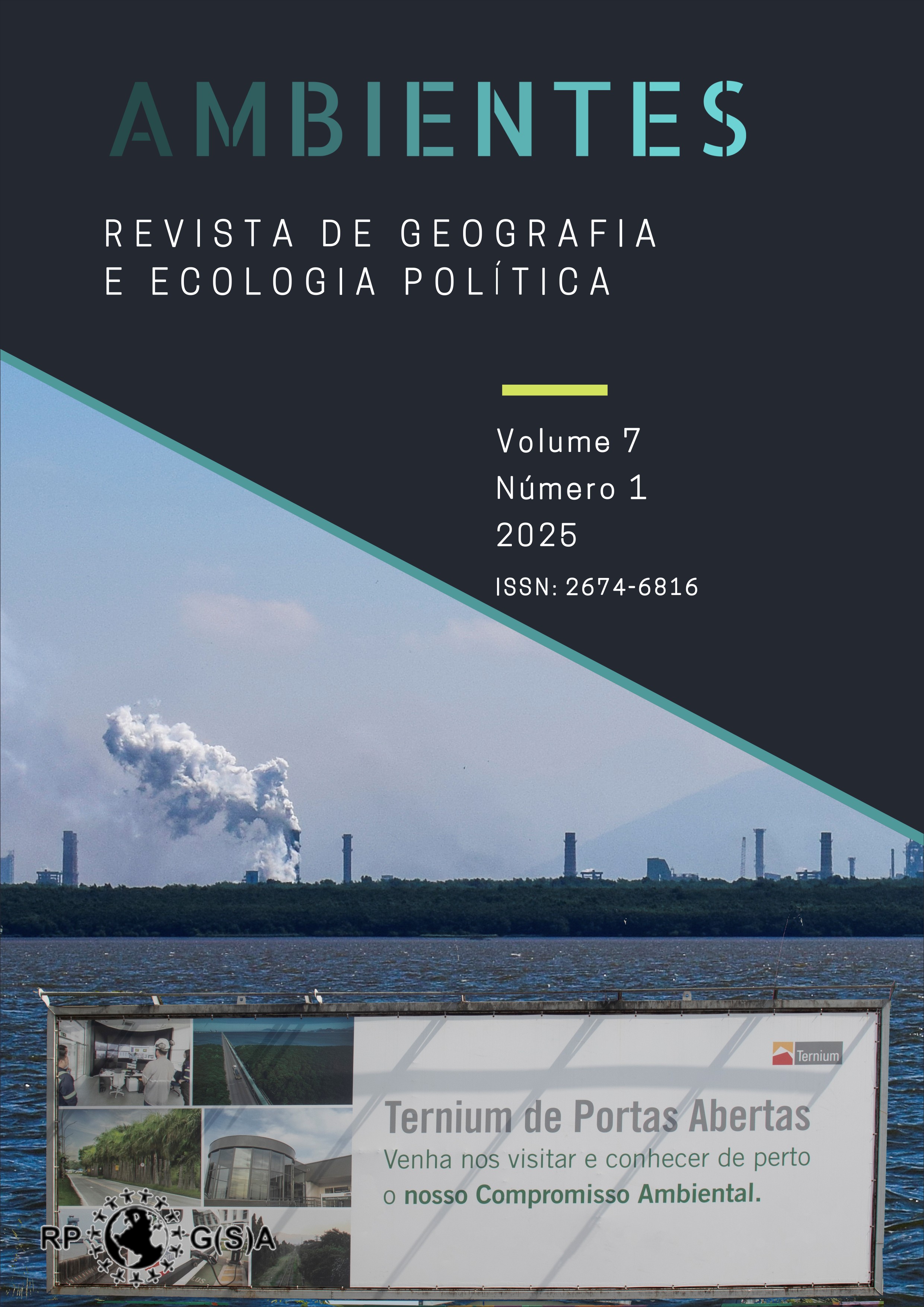The influence of transgenic soybean farming in the environmental degradation of the Pampa of Rio Grande do Sul
DOI:
https://doi.org/10.48075/amb.v7i1.32973Abstract
This article discusses some of the environmental impacts of transgenic soybean farming in the territories of the five main producing municipalities in the produced area of the state of Rio Grande do Sul – Tupanciretã, São Gabriel, Júlio de Castilhos, Cachoeira do Sul and Dom Pedrito. These territories occupy the morphoclimatic and phytogeographical domain of the Pampa, which has been the most deforested in recent decades in the country, mainly for conversion to transgenic soybean farming. This process is taking place against the backdrop of the soya commodity, which has been expanding greatly. Through cartographic analysis of land use, the considerable vegetative loss in the Pampa is notable. This affects the diversity of flora and fauna, degrades the soil by turning it over and making it unprotected for agriculture and compromises the region's climate and water balance. At the same time, poisoning occurs due to pesticides used massively in the management of transgenic crops. The rivers in these territories - Jaguari, Vacacaí, Toropi, Jacuí and Santa Maria -, after field research and laboratory analysis, showed contamination by various pesticides, some of them banned by Anvisa. The conclusion is that transgenic sojiculture causes various environmental impacts, deriving from the hegemonic dynamics of the cultivar, which ignores and does not include the environmental cost of the problems generated, threatening the various forms of life in the Pampa.
Keywords: Transgenic soybean farming; Pampa; Deforestation; Intoxication.
Downloads
Published
How to Cite
Issue
Section
License

This work is licensed under a Creative Commons Attribution-NonCommercial-ShareAlike 4.0 International License.
Aviso de Direito Autoral Creative Commons
Política para Periódicos de Acesso Livre
Autores que publicam nesta revista concordam com os seguintes termos:
1. Autores mantém os direitos autorais e concedem à revista o direito de primeira publicação, com o trabalho simultaneamente licenciado sob a Licença Creative Commons Attribution que permite o compartilhamento do trabalho com reconhecimento da autoria e publicação inicial nesta revista.2. Autores têm autorização para assumir contratos adicionais separadamente, para distribuição não-exclusiva da versão do trabalho publicada nesta revista (ex.: publicar em repositório institucional ou como capítulo de livro), com reconhecimento de autoria e publicação inicial nesta revista.
3. Autores têm permissão e são estimulados a publicar e distribuir seu trabalho online (ex.: em repositórios institucionais ou na sua página pessoal) a qualquer ponto antes ou durante o processo editorial, já que isso pode gerar alterações produtivas, bem como aumentar o impacto e a citação do trabalho publicado (Veja O Efeito do Acesso Livre).
Licença Creative Commons
Esta obra está licenciada com uma Licença Creative Commons Atribuição-NãoComercial-CompartilhaIgual 4.0 Internacional, o que permite compartilhar, copiar, distribuir, exibir, reproduzir, a totalidade ou partes desde que não tenha objetivo comercial e sejam citados os autores e a fonte.


